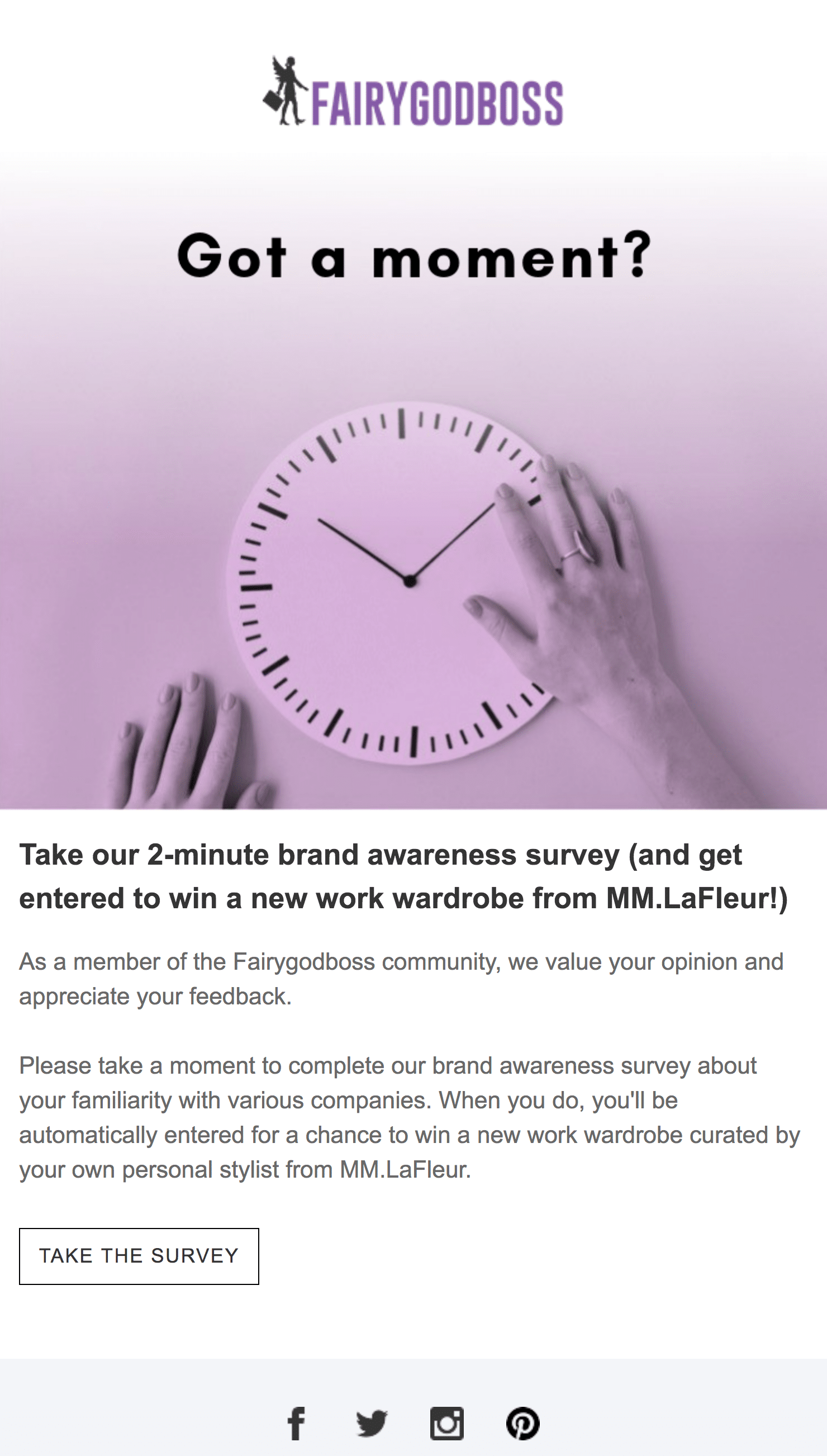Now that you’ve mastered the basics, you’re ready for the next level.
The great thing is, email is accessible to businesses of any size, leveling the playing field between you and large companies.
Email marketing success all comes down to customizing the audience experience and treating every single contact on your list as an individual.
Luckily, you can take the guesswork out of your email strategy when you incorporate these practices.
Preference centers allow subscribers to choose their interests.
When you allow subscribers to self-segment by selecting their interests and choosing which emails they’d like to receive—and more importantly, the emails they don’t want to receive—email marketing becomes easier and success more attainable.
You can also allow subscribers to choose what information they share with you through a preference center, like their location or age.
Keep reading about how to optimize your preference center.
Choose a send cadence and stick with it.
When you signed up for this email course, we told you exactly when and how often we’d email you. And then we did exactly that. If you say you’re going to do something, like send an email once a month, you should do it. It’s just good practice.
On top of that, a sporadic send cadence is more likely to get more people to unsubscribe.
Not to mention, if you send sporadically, your subscribers will get the impression that you aren’t on top of your business. And that’s never a good look if you’re trying to grow your brand.
Ask for feedback and then act on it.
Don’t be afraid to ask your subscribers what they like and what works for them. If you send a survey, make the process simple for your readers.
This email from Fairygodboss even tells subscribers how long the survey will last for added user-experience.

But when you do receive feedback, be sure to thank your subscribers for their time and acknowledge their opinions.
If you ask for feedback and then dismiss it, your subscribers will assume that you don’t really care about their opinion. And if you make them feel like you don’t respect what they have to say, they’ll unsubscribe and won’t come back.
Improve your deliverability.
As you’d expect, deliverability can make a huge difference in the results you see from email. After all, if no one sees your email, you certainly won’t have anyone open your email or follow your CTA.
There are plenty of factors that affect your deliverability:
- Bad sender reputation
- Too many spam complaints from subscribers
- Sending from an unauthenticated domain
- Sending to a purchased list
- Having too many emails bounce
Addressing these issues will improve your deliverability as well as your subscribers’ experience.
Learn more about email deliverability and how to improve yours here.
Test, test, test!
Most importantly, you’re never going to get everything right on the first try. For each campaign, you can A/B test (send out 2 slightly different versions of the same email to a small group of engaged subscribers) so you know you’ll see the biggest impact possible when you deliver your full campaign.
You can also monitor your results over time and refine your strategy to resonate with your audience.
Once you know what works, you can do more of it.
Today’s Challenge
Choose one thing from today’s lesson you want to tackle first:
- Implementing A/B testing
- Updating the preference center
- Asking for feedback
[Tweet “Ready to take this to the next level with: — #SmallBusinessBigResults @Campaign.Monitor” “Let us know how you plan to level up your email marketing on Twitter using #SmallBusinessBigResults.”]
Move beyond the basics and drive more revenue with email.
Keep that personal touch with your customers as your business grows. That’s the power of unforgettable email marketing.